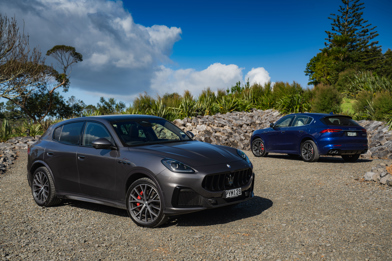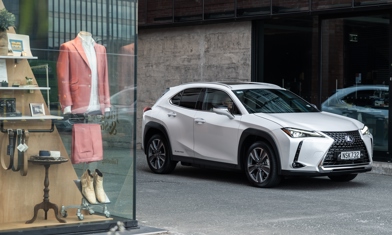Feels like deja vu, I know - it was little under a year ago I was in the Scottish highlands to drive the Ineos Grenadier for the first time. So why another "first drive"?
Well, this time it is in the rural outskirts of Melbourne at the local - well, more local at least - media launch of the Grenadier and a chance to drive it in more familiar conditions.
The story of the Grenadier has been told many times before: dreamed up by a billionaire in a pub following the demise of the original Land Rover Defender, Ineos intended the Grenadier to be a utilitarian ladder-chassis SUV that was incredibly capable off the road, as well as comfortable and safe on it.
And have they achieved that? Well, yeah - the Grenadier was deeply impressive through the snow and mud in Scotland, but now it was time to see how it would fare swapping out the snow and mud of Scotland for the dust and rocks of Australia.

Spoiler alert: no surprises, it is just as insanely capable there.
I mean, literally no surprises, as the Grenadier is one seriously capable off-road machine from a sheer mechanical point of view, consisting of some of the best equipment money can buy; heavy duty Carraro beam axles and Eibach five-link coil suspension with anti-roll bars, a ZF eight-speed automatic transmission channelling the power through an Ineos-designed, Tremec-built two-speed transfer case, Dana Spicer CV joints and prop shafts, Eaton locking differentials, Brembo brakes and Bosch electronics.
Ineos has complimented the impressive collection of off-road mechanicals with a sprinkling of electronic assists like off-road and wading drive modes and hill descent control, and while those are all very good, the basic mechanical foundation is just so damn capable that they almost don't matter.

Selecting low range is done with a traditional lever next to the gear shifter. Moving it down in either direction selects low range, while moving it left and right while down there switches between locking and unlocking the centre diff.
While I would normally just say "diesel, of course" when it comes to a serious off-road vehicle, the choice isn't quite so clear-cut here.
Speaking of locking differentials, the Grenadier is pretty formidable with the centre diff it comes with as standard locked and becomes basically unstoppable when you start adding the front and rear options.

While the Grenadier is available in three model variants - the base vehicle, the Trialmaster and the Fieldmaster - the latter two are actually more curated options packs buyers can select to make their Grenadier more road/luxury oriented (the Fieldmaster) or even more off-road capable (the Trialmaster) and any combination of the extremely extensive options and accessories can be mix and matched.
Apart from personalising the Grenadier for your needs, the biggest choice you have to make is whether you want the 183kW/550Nm diesel or 210kW/450Nm petrol version of the excellent BMW-supplied 3.0-litre straight-six turbo engine. Both engines are, as expected, excellent, which is unsurprising given that the B57/B58 inline six has scooped up numerous awards since its first incarnation in 2015 and is generally considered one of the best and most reliable engines the company has ever produced.
While I would normally just say "diesel, of course" when it comes to a serious off-road vehicle, the choice isn't quite so clear-cut here. Ineos has tuned the BMW powerplants to suit its purposes, so while the petrol six is a high-revving sporty delight in BMWs (and other road going vehicles that use that engine), in the Grenadier it is a low-down torque monster that rivals the diesel for sheer pull.

On the other hand, the diesel is a smooth and powerful unit with impressive amounts of mid-range power that is significantly more "petrol like" than your traditional rattly off-road oil burner, making the two options surprisingly closely matched.
All of this impressive hardware would be seriously compromised if the Grenadier wasn’t built and designed for off-roading from the outset, which, of course, it is.
However, it is the petrol's more relaxed on-road demeanour that tips the choice for me personally. Along with almost all the diesel's low down torque and off-road grunt, the slick petrol six's revvier nature and more refined edge makes it the more compelling choice.

Regardless of which fuel source you go with, however, the engines in the Grenadier are smooth, refined and extremely well-suited to off-road use, with fat wads of torque down nice and low in the respective rev bands - the diesel develops its 550Nm maximum all the way from 1250rpm, while the petrol pulls its 450Nm from 1750rpm.
All of this impressive hardware would be seriously compromised if the Grenadier wasn’t built and designed for off-roading from the outset, which, of course, it is. Constructed on a box-section ladder frame chassis made from 3.5mm high tensile steel, the Grenadier boasts 264mm of ground clearance and an 800mm wading depth, along with approach, breakover and departure angles of 36.2 degrees, 28.2 degrees and 36.1 degrees respectively.
This all adds up to a package that is truly exceptional in the rough stuff, regardless of whether it is snow and mud or dirt and rocks, with all the prodigious confidence and abilities of the likes of a Jeep Wrangler, Toyota Land Cruiser 70 Series or an original Land Rover Defender, but with a twist - it is also actually rather good on the road as well.

Yes, that’s right, the Grenadier is a proper ladder chassis hardcore off-roader that has excellent on-road manners. With a comfortable ride and well-sorted handling, the Grenadier is light years ahead of the aforementioned off-road competitors when it comes to hustling along sealed roads.
The Grenadier is very much a niche vehicle, but for anyone neck deep in the mud of that niche it is an extremely appealing one, offing a combination of serious off-road ability and convincing on-road comfort that is rarely seen.
It is, of course, still a big, hefty ladder-chassis truck, but the refinement and composure Ineos has engineered into something so dedicated to sheer off-road ability is truly impressive. Settled and confident at speed, it has minimal body roll when chucked into a corner despite its pliant off-road suspension.

The most obvious compromise the Grenadier makes to its off-road ability when on the road is the steering - while nicely accurate and precise, it lacks much in the way of the expected self-centering you get in a more road-oriented vehicle.
While this is a massive advantage when you are deep in the rough stuff where you want the wheels to stay pointed exactly where you want them to point, the trade off is that it does feel a bit odd when you are on the open road. It’s not actually a problem as such, however, and you do quickly get used to it.
On the inside the Grenadier is as magnificently utilitarian and belligerently old-school as it is on the outside, with a simple, minimalist layout, big, chunky controls and a fantastic aircraft-inspired overhead array of switches and buttons with plenty of extra space for the optional pre-wired accessory system for all those extras you are definitely going to throw at it.

And there are many, many of those.
The Grenadier is available in either Station Wagon (the standard five-seater), Utility Wagon (a two-seat version with the rear seats removed, a cargo divider and blanked off side windows) and, soon, Quartermaster pick up variants.
The Grenadier starts at $120,000 for the Station Wagon or Quartermaster (the stripped out Utility Wagon is $1000 less) and delving deep into the extensive options list can easily get it over the $140k mark, but it will get you a highly-equipped, insanely capable off-roader with original Land Rover Defender vibes for new mid-spec Land Rover Defender money.
Admittedly, the Grenadier is very much a niche vehicle, but for anyone neck deep in the mud of that niche, it is an extremely appealing one offering a combination of serious off-road ability and convincing on-road comfort that is rarely seen.
INEOS GRENADIER
ENGINE: 3.0-litre turbo-petrol inline six or 3.0-litre turbo-diesel inline six
POWER: 210kW/450Nm (petrol) or 183kW/550Nm) diesel
GEARBOX: 8-speed automatic, 4WD
0-100KM/H: n/a
CONSUMPTION: 14.4l/100km, CO2 325g/km (petrol) or 10.5l/100km, CO2 276g/km (diesel)
PRICE: $120,000



















